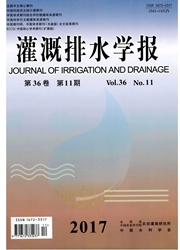

 中文摘要:
中文摘要:
分析了川中丘陵区不同土地利用方式(坡耕地、梯平地、核桃林、甜橙林、水保林、裸地)下表层(0~20cm)土壤理化性状,并运用主成分分析法计算土壤质量综合指数以评价土壤质量。结果表明,不同土地利用方式下土壤理化性状差异显著,核桃林、甜橙林、水保林土壤贮水量、土壤孔隙度、平均入渗率、前90min渗透总量、全氮、碱解氮、有机质、全磷和有效磷等均优于其他土地利用方式;不同土地利用方式下土壤质量综合指数表现为核桃林(0.324)〉甜橙林(0.120)〉水保林(—0.010)〉梯平地(—0.021)〉坡耕地(—0.112)〉裸地(—0.288),核桃林对土壤质量的改善效果最明显,裸地最差。核桃林是川中丘陵区小流域治理的最佳选择模式。
 英文摘要:
英文摘要:
Topsoil (0-20 cm) properties in different typical land use types (slope cropland, leveled cropland, bare land, walnut forest, conservation forest, orange forest) were analyzed in the hilly area of central Sichuan, and soil quality was evaluated by the comprehensive soil quality index calculated by principal component analysis. The results showed that soil physical and chemical properties were significantly different in different land use types. Soil water storage, soil porosity, average infiltration rate, total penetration before 90 rain, total nitrogen, available nitrogen, organic matter, total phosphorus and available phosphorus in walnut forest, orange forest and conservation forest were all better than those in other land use types. Comprehensive soil quality integrated indexes were ranked as follows, walnut forest (0. 324) 〉 orange forest (0. 12) 〉 conservation forest ( - 0. 01)〉 leveled cropland (-0. 021)〉slope cropland(-0. 112)〉bare land (-0. 288). Comprehensive soil quality index in walnut forest was the highest while it was the worst in bare land. Walnut forest was the best mode of the comprehensive management in small watershed.
 同期刊论文项目
同期刊论文项目
 同项目期刊论文
同项目期刊论文
 期刊信息
期刊信息
